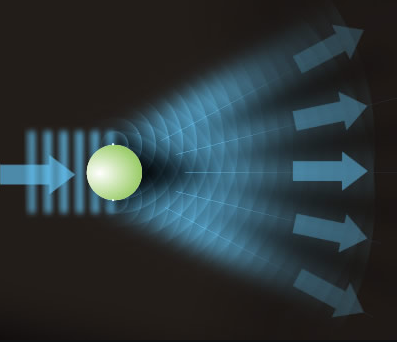OPOD - Flatirons Iridescence
OPOD - Flatirons Iridescence: A Captivating Display of Atmospheric Optics
Have you ever witnessed a mesmerizing display of iridescence dancing above the majestic Flatirons in Boulder, Colorado? In January 2012, Will Schaleben captured this enchanting phenomenon in a time-lapse video, showcasing the beauty of nature's artwork. As the winds howl at speeds potentially exceeding 100 mph, wisps of clouds resembling imaginary creatures traverse the sky. At the forefront of a standing wave lenticular formation, breathtaking iridescent clouds materialize, captivating observers with their vibrant hues. This article delves deeper into the science behind this captivating spectacle and explores the intricacies of atmospheric optics.
The Play of Colors and the Ever-Changing Clouds
As you watch the time-lapse video repeatedly, the undulating motion of the clouds becomes apparent. The iridescence flashes in fragmented patterns, illuminating the sky before gradually fading away. Notice how the cloud bank in the upper left corner exhibits banded iridescence. Here, the cloud layer is thinner, but as it approaches its boundary, it thickens, enhancing the intensity of the colors.
The Dance of Moisture and Light
The wave-like motion observed in the atmosphere is induced by the passage of air over high ground. As pockets of air ascend, they expand and cool, providing an ideal environment for moisture to condense into tiny droplets. When sunlight interacts with these droplets, diffraction occurs, causing the light to scatter and create a complex array of colors. The size of the droplets plays a crucial role in determining the clarity and vibrancy of the iridescence. Over time, collisions between droplets, along with further condensation and evaporation, lead to changes in droplet size. Consequently, the diffraction effects become less distinct, and the colors gradually fade away.
The Transient Life of an Air Pocket
In a matter of seconds, an air pocket experiences a series of transformations. After ascending and producing the stunning iridescence, it is swiftly forced downwards, where it warms and the droplets disperse. However, this respite is short-lived, as the pocket is soon swept upwards again, repeating the cycle of atmospheric dynamics. These rapid fluctuations contribute to the ephemeral nature of the iridescence and add to its allure.
Unveiling the Mechanism Behind Iridescence
The enchanting colors observed in iridescent clouds are a result of light interacting with individual droplets. When sunlight encounters these droplets, it scatters primarily at their surface, giving rise to outgoing spherical waves. In specific directions and for certain wavelengths, the wave crests of these scattered waves align, resulting in vibrant colors that captivate our senses.
Unlocking the Original Article
Please note that this article has been automatically converted from the old site, which may have affected its intended appearance. If you wish to explore the original article, you can find it here.
Conclusion
The iridescence witnessed above the Flatirons in Boulder, Colorado is a breathtaking spectacle of atmospheric optics. The interplay between wind patterns, moisture content, and sunlight gives rise to a vivid display of colors that captivates observers. By understanding the science behind this phenomenon, we can appreciate the transient beauty of iridescence and marvel at the intricate workings of our atmosphere. So next time you find yourself gazing at the sky, keep an eye out for these ethereal clouds and let yourself be enchanted by nature's artistry.
Iridescence over Boulder, Colorado Flatirons
A time-lapse video by Will Schaleben
“Imaginary cloud creatures prance across the sky above the Flatirons of Boulder, Colorado.
High winds, probably over 100 mph, drive baby clouds along as if wild horses. Beautiful iridescent clouds form at the leading edge of a standing wave lenticular formation.
Shot January 18, 2012 with HTC EVO View smartphone using Time lapse app at one frame every 4 seconds at 15 frames per second play speed."
©2012 Will Schaleben, shown with permission

Play this several times. Watch the clouds� wave motions. Watch iridescence flash in the new fragments then fade leaving them white light before they fade and evaporate. Watch the cloud bank at upper left with banded iridescence where it is thin but thickening at its boundary.
Wave motion induced by passage over high ground forces moist air upwards and downwards. As an air pocket climbs it expands and cools. If it is moist enough some water vapour condenses into small droplets which diffract sunlight to give the complex colours. Age takes its toll, the droplet sizes spread through collisions, more condensation and evaporation � their collective diffraction effects blur and the colours fade. Then the pocket is forced downwards where it warms and the droplets are gone. All in a second or so before the pocket is swept upwards yet again...
Left:
The colours are produced by individual droplets. Light is scattered mainly at their surface to form outgoing spherical waves. The waves overlap and in some directions - and for some wavelengths - their wave crests are in phase and give bright colour.
Note: this article has been automatically converted from the old site and may not appear as intended. You can find the original article here.
Reference Atmospheric Optics
If you use any of the definitions, information, or data presented on Atmospheric Optics, please copy the link or reference below to properly credit us as the reference source. Thank you!
-
<a href="https://atoptics.co.uk/blog/opod-flatirons-iridescence/">OPOD - Flatirons Iridescence</a>
-
"OPOD - Flatirons Iridescence". Atmospheric Optics. Accessed on April 18, 2024. https://atoptics.co.uk/blog/opod-flatirons-iridescence/.
-
"OPOD - Flatirons Iridescence". Atmospheric Optics, https://atoptics.co.uk/blog/opod-flatirons-iridescence/. Accessed 18 April, 2024
-
OPOD - Flatirons Iridescence. Atmospheric Optics. Retrieved from https://atoptics.co.uk/blog/opod-flatirons-iridescence/.